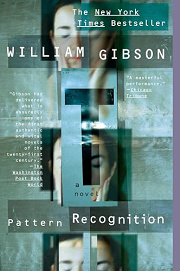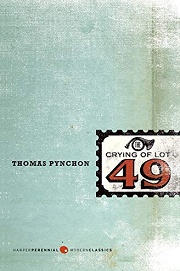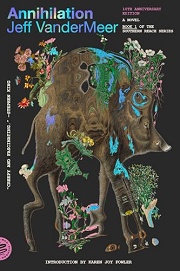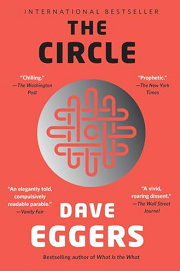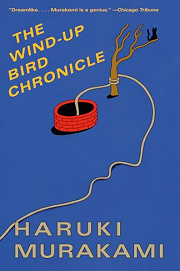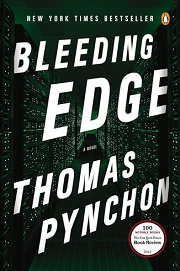Share your thoughts in a quick Shelf Talk!
Pattern Recognition by William Gibson
A marketing savant with an allergy to logos can sense authenticity like a tuning fork—until a mysterious viral video lures her into a global chase through art, fashion, and the buried code of culture. Cool, incisive, and eerily prescient, Pattern Recognition is a sleek techno-thriller about meaning in a world of noise.
Have you read this book? Share what you liked (or didn’t), and we’ll use your answers to recommend your next favorite read!
Love Pattern Recognition but not sure what to read next?
These picks are popular with readers who enjoyed this book. Complete a quick Shelf Talk to get recommendations made just for you! Warning: possible spoilers for Pattern Recognition below.
In Pattern Recognition, did you enjoy ...
... decoding conspiratorial clues hidden in media and pop culture?
The Crying of Lot 49 by Thomas Pynchon
If you were hooked by Cayce tracking the anonymous "footage" at Hubertus Bigend’s behest—and how every logo, watermark, and stray forum post might be a clue—you’ll love following Oedipa Maas as she chases the shadowy Tristero through stamps, songs, and symbols. Like Cayce’s late-night dives with Parkaboy and her wary dealings with Blue Ant, Oedipa’s search blurs marketing, myth, and paranoia into a tantalizing puzzle that keeps tightening around her.
... a solitary investigator unraveling an unnerving, authorless artifact and its effect on the self?
Annihilation by Jeff VanderMeer
Cayce’s hypersensitivity to brands and her obsessive pull toward the "footage" mirror the Biologist’s inward spiral as she studies Area X’s inexplicable phenomena. If Cayce’s quiet resolve in London, Tokyo, and Moscow—despite Dorotea’s sabotage and Bigend’s pressure—drew you in, the Biologist’s cool, clinical voice and unnerving encounters (like the living "tower" of script) will scratch that same itch for interior intensity and creeping revelation.
... sharp, near-future critique of branding, surveillance, and viral culture?
The Circle by Dave Eggers
The way Cayce navigates Blue Ant’s influence—leveraging online communities, parsing forum legends, and guarding herself from invasive branding—echoes Mae Holland’s immersion in the Circle’s all-consuming platform. If Bigend’s corporate omnivorousness and the viral mystique around the "footage" fascinated you, you’ll be gripped by how transparency tech and engagement metrics escalate from clever to claustrophobic.
... a patient, uncanny search that drifts from city streets into subterranean mysteries?
The Wind-Up Bird Chronicle by Haruki Murakami
If you liked how Cayce’s quest unfolds as a quiet, accumulating tension—jet-lagged walks, coded emails from Parkaboy, chance meetings with Stella and Voytek, and a trail that finally leads to Moscow—Murakami’s Toru Okada will resonate. His measured search for a missing wife moves from mundane errands to deep wells and wartime echoes, building that same hypnotic, slow-burn momentum toward unsettling truths.
... early-2000s tech subcultures, dot-com detritus, and paranoid investigation in the wake of globalization?
Bleeding Edge by Thomas Pynchon
Gibson’s granular feel for London backstreets, Tokyo cafes, Moscow lofts, and the gloss-grit of Blue Ant’s brandscape finds a twin in Pynchon’s lovingly rendered dot-com New York. If Cayce’s trawls through message boards and streetwear scenes, the Curta-collector subculture, and Bigend’s globe-spanning reach pulled you in, Maxine Tarnow’s dive into DeepArcher, deep-pocketed tech players, and post–9/11 Manhattan offers that same richly textured, culture-soaked world to get lost in.
Unlock your personalized book recommendations! Just take a quick Shelf Talk for Pattern Recognition by William Gibson. It’s only a few questions and takes less than a minute.
